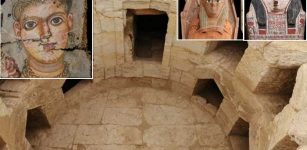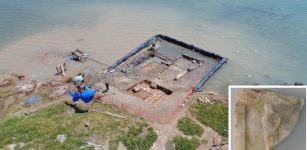Neanderthal Hunting Camp Discovered In The Center Of The Iberian Peninsula
Conny Waters - AncientPages.com -Researchers undertook a zooarchaeological and taphonomic study of the Neanderthal Navalmaíllo Rock Shelter site (Pinilla del Valle, Madrid), some 76,000 years old, whose results indicate that these Neanderthals mainly hunted large bovids and cervids.
Fauna remains. Credit: Abel Moclán
Thanks to the taphonomic study, it has been possible to characterize the site as a "hunting camp," meaning that it was used by these hominins as a staging post between where they caught their prey and the place of final consumption, at which the entire group would have made use of the resources the hunting parties obtained at different times.
Covering over 300 m2, this is possibly the region's largest Neanderthal camp, and evidence had previously been found of different activities undertaken by these hominins here, such as manufacturing stone tools or the use of fire, at different moments, although little had been known about how important the faunal remains encountered were.
"We've been able to show with a high degree of certainty that the Navalmaíllo Neanderthals mainly hunted large bovids and cervids, which they processed there and then carried to a second-place of reference. This point is very interesting, as this type of behavior has been identified at very few sites in the Iberian Peninsula. To do all this, we used very powerful statistical tools such as Artificial Intelligence," says Abel Moclán, a researcher at the Centro Nacional de Investigación sobre la Evolución Humana (CENIEH), is the lead author of a paper.
The 20th excavation campaign at the Pinilla del Valle sites is currently underway, from August 15th through September 15th.
Written by Conny Waters - AncientPages.com Staff Writer





















